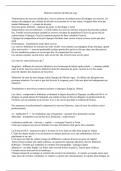Summary
Biological membrane full topic summary
- Module
- Biological membranes
- Institution
- OCR
Super in-depth summary of the entire biological membranes topic using all specification points answers are literal exam answers from most past papers which guarantees marks!
[Show more]












